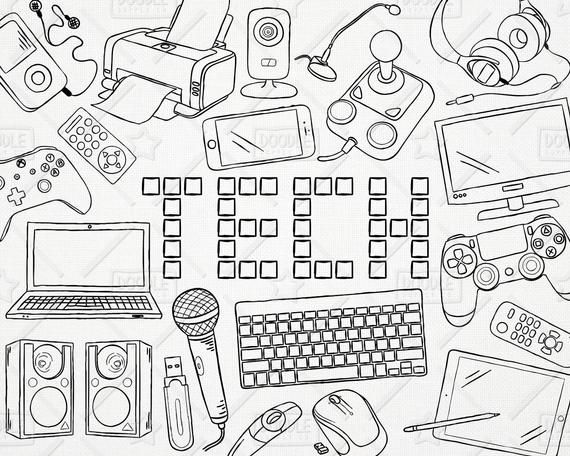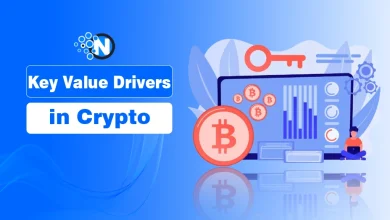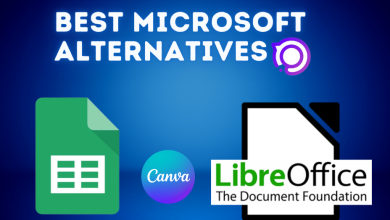Computer Clipart and its History

A computer clipart is a collection of pictures or images that have the special feature to be imported into a particular document or another program. Images that are part of the computer clipart are generally raster graphics or vector graphics. Clipart galleries do not have any specific number of clipart in store. It may vary from a few images to a few hundred to even multiples of thousands.
In-depth information on computer clipart
Computer clipart is a type of graphic art. The images are pre-made used for certain purposes which fits the significance of the image the most. In today’s modern world, computer clipart is extensively used in both, electronic as well as printed. Although most computer clipart is used on digital platforms.
Since the advent of computer clipart, it has evolved to include a huge variety of content, file formats, illustration styles as well as licensing restrictions. Computer clipart has been of immense use to us, as the images are used to make people understand the matter more clearly. It is a known fact that visual reading is always easier to understand as compared to the other modes.
Functions of electronic computer clipart

Electronic computer clipart is available in various file formats. Clipart users need to decipher the differences between file formats to help them understand properly and use the most appropriate image file to get the perfect resolution as well as detailed results they need. Computer clipart formats are mainly divided into two types: bitmap or vector graphics.
Bitmap or rasterized file formats are used in describing rectangular images made up of a grid of colored or grayscale pixels. For example, scanned photos make use of a bitmap file format. Bitmap images are generally limited in quality in terms of resolution, which needs to be fixed when the file is being created.
If the image is not rectangular as mentioned before, then it is saved on a default background color, which is usually white, defined by the smallest bounding rectangle where the image fits. Due to their fixed resolution, printing bitmap images can easily produce grainy, jaggy as well as blurry results if the resolution is not suited to the printer resolution.
Bitmap images can also become grainy if they are scaled larger than their respective resolution. A couple of bitmap file formats support alpha channels, which allow these bitmap computer clipart images to have transparent backgrounds or an image selection that uses antialiasing.
The most common web-based file formats such as GIF, JPED as well as PNG are bitmap computer clipart file formats. The GIF file format is one of the simplest as well as low-resolution file formats which only supports 256 colors per image. As a result of this, GIF files can be extremely small as far as file sizes are concerned.
Other common bitmap computer clipart file formats are BMP, TGA as well as TIFF. Usually, the majority of computer clipart is provided in a low resolution, a bitmap file format which is not suitable for scaling, transparent backgrounds, or even good quality printed materials for that matter. Bitmap computer clipart files are ideal for photos, especially when mixed with lossy data compression algorithms such as those which are available for PED files.
On the other hand, the one that contrasts with the grid format of the bitmap is the vector graphics file computer clipart format. Vector graphics file formats use geometric modeling to describe an image as a series of points, lines, curves as well as polygons. Since the image is described using geometric data instead of fixed pixels, the respective picture can be scaled to any size while retaining the independence of resolution.
This means that the respective image can be printed at the very highest resolution that a printer supports, which results in a clear as well as crisp image. Computer clipart images in vector file formats are generally superior in terms of resolution, and ease of editing in comparison with bitmap file formats, but are not as widely supported by software as well as not suited for storing pixel-specific data, for example, scanned photographs. Although soon after the new millennium, vector illustration tools were able to produce virtually the same illustrations as bitmap illustration tools.
History of the Computer Clipart
We use the term computer clipart now, through digital platforms or various print media. But the use of clipart has been going on for a long time, much before the computer was invented. The term ‘Clipart’ originated through the practice of manually cutting images from printed pieces of work for use in other various publishing objects.
Before the concept of computer clipart was invented, clipart was used through a process known as ‘Paste Up’. A lot of clipart images of this period qualified as line art. In this process, the clip-out images are cut out manually, then attached using gum or adhesives to a board that presents a scale size of the finished and printed work.
Post the addition of text and art, created through phototypesetting, the completed, camera-ready pages are known as mechanicals. From the early 90s, almost all publishers have replaced the paste-up process with desktop publishing. The advent of computers completely changed the concept of physical clipart to computer clipart, which can also be known as digital clipart.
Rights of the Image
All computer clipart usage is governed by the terms of individual copyrights as well as usage rights. The copyright, as well as usage rights of computer clipart, are vital to understanding so that the image is used in a legal as well as permitted way.
There are mainly three types of image rights. They are royalty-free, rights-managed, and public domain. The majority of all commercial clip art is sold with a limited royalty-free license which allows customers to use the image for most personal, educational as well as non-profit applications.




